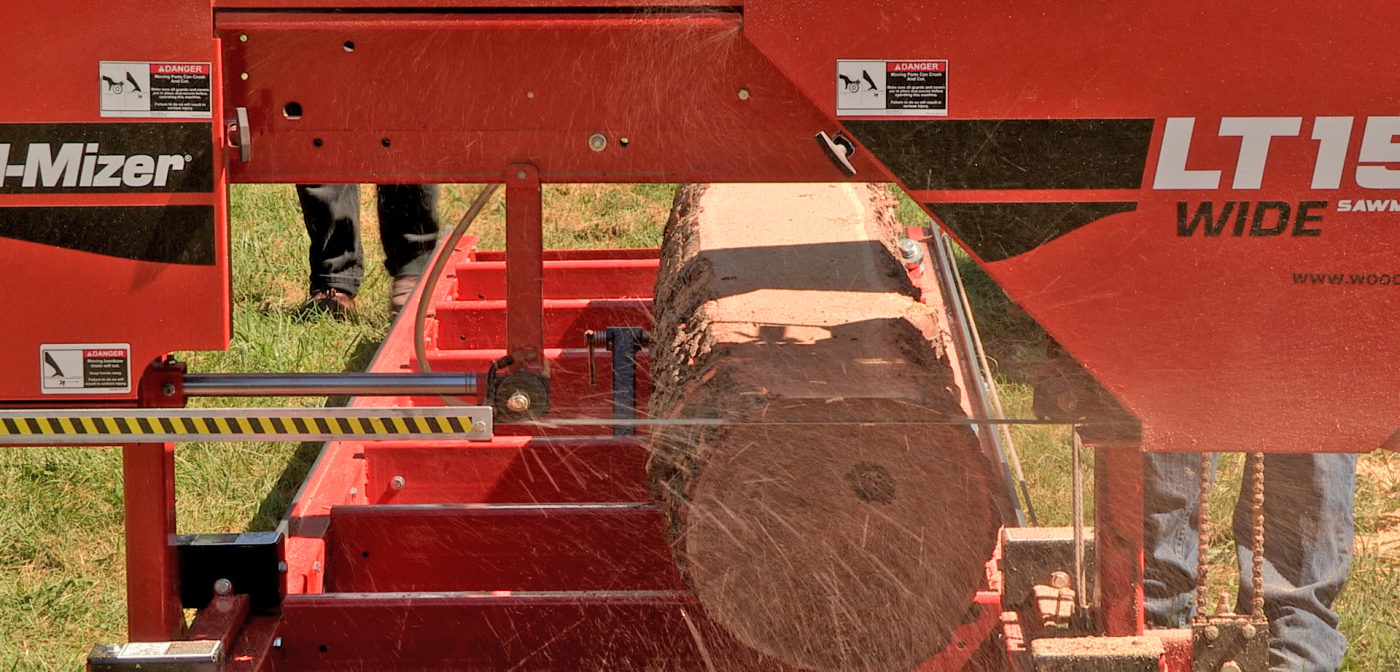We may receive a commission when you use our affiliate links. However, this does not impact our recommendations.
Sponsored by Wood-Mizer.
 Finding affordable lumber has always been a mainstay for woodworkers, and when you tie our dwindling natural resources into the conversation the time is right to look at milling your own lumber. This seven-part weekly video series takes you through how to find lumber, how to operate a sawmill, details on types of sawing methods, stickering and drying and ultimately advice on using a mill as part of a business. Learn what you need to know to understand Milling Your Own Lumber. For more information on sawmills, please visit Wood-Mizer.
Finding affordable lumber has always been a mainstay for woodworkers, and when you tie our dwindling natural resources into the conversation the time is right to look at milling your own lumber. This seven-part weekly video series takes you through how to find lumber, how to operate a sawmill, details on types of sawing methods, stickering and drying and ultimately advice on using a mill as part of a business. Learn what you need to know to understand Milling Your Own Lumber. For more information on sawmills, please visit Wood-Mizer.
Preview:
Conversations with Our Hosts:
Section One: Why Own a Sawmill
Dan and Logan introduce sawmilling, the emergence of urban wood, where to find logs, setting up a portable sawmill, and loading a log.
Section Two: Plain Sawing a Log
Logan walks through the process of plain sawing or live through and through sawing. Learn how to identify defects in the log, position the log on the bed, determine the opening face, how to operate the sawmill, and decide when to turn the log while sawing.
Section Three: Edging Lumber
Logan demonstrates how to produce square edge boards on a sawmill and on a twin blade board edger.
Section Four: Sawing Techniques
Dan and Logan demonstrate how to quarter saw a log with a bandsaw mill as well as how to produce rift sawn lumber, dimensional lumber, and live edge wood slabs.
Section Five: Blades & Basic Maintenance
Logan discusses choosing sawmill blades based on sawing different types of material, sharpening blades, and how to change a sawmill blade. Logan also covers basic sawmill maintenance including checking drive belt tension, blade alignment, engine, side supports, bed sections, and common wear items.
Section Six: Drying & Stacking
Dan walks through the most important part of the sawmilling process – drying lumber! Dan covers stacking, how to air dry lumber, measuring moisture content, and kiln drying lumber, in order to reduce stain or damage to the lumber after it’s been sawn.
Section Seven: Grading & Pricing
Dan discusses how to calculate board feet, a high-level overview of grading lumber, and resources to help price lumber competitively in the market.
Here are some supplies and tools we find essential in our everyday work around the shop. We may receive a commission from sales referred by our links; however, we have carefully selected these products for their usefulness and quality.








